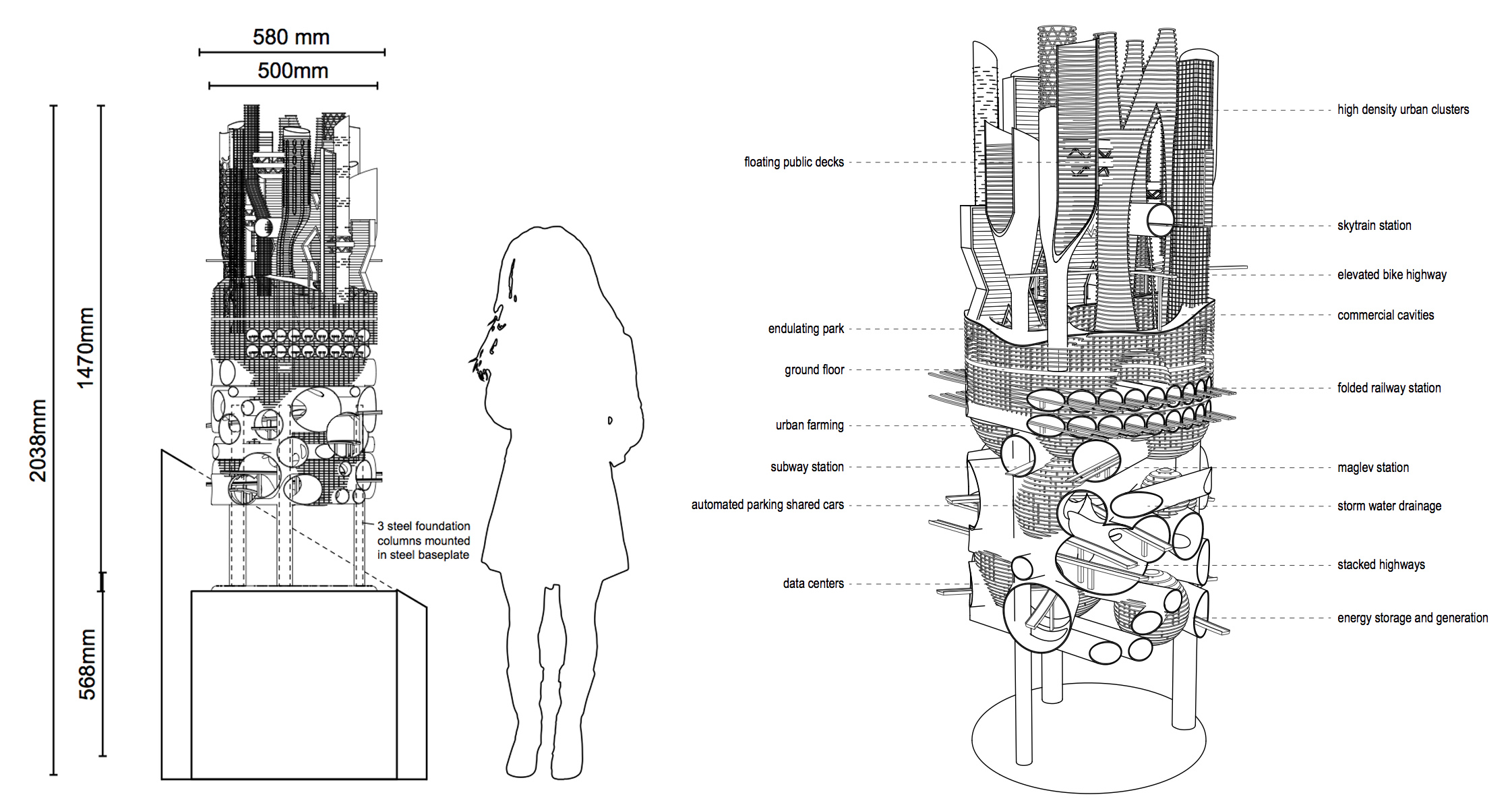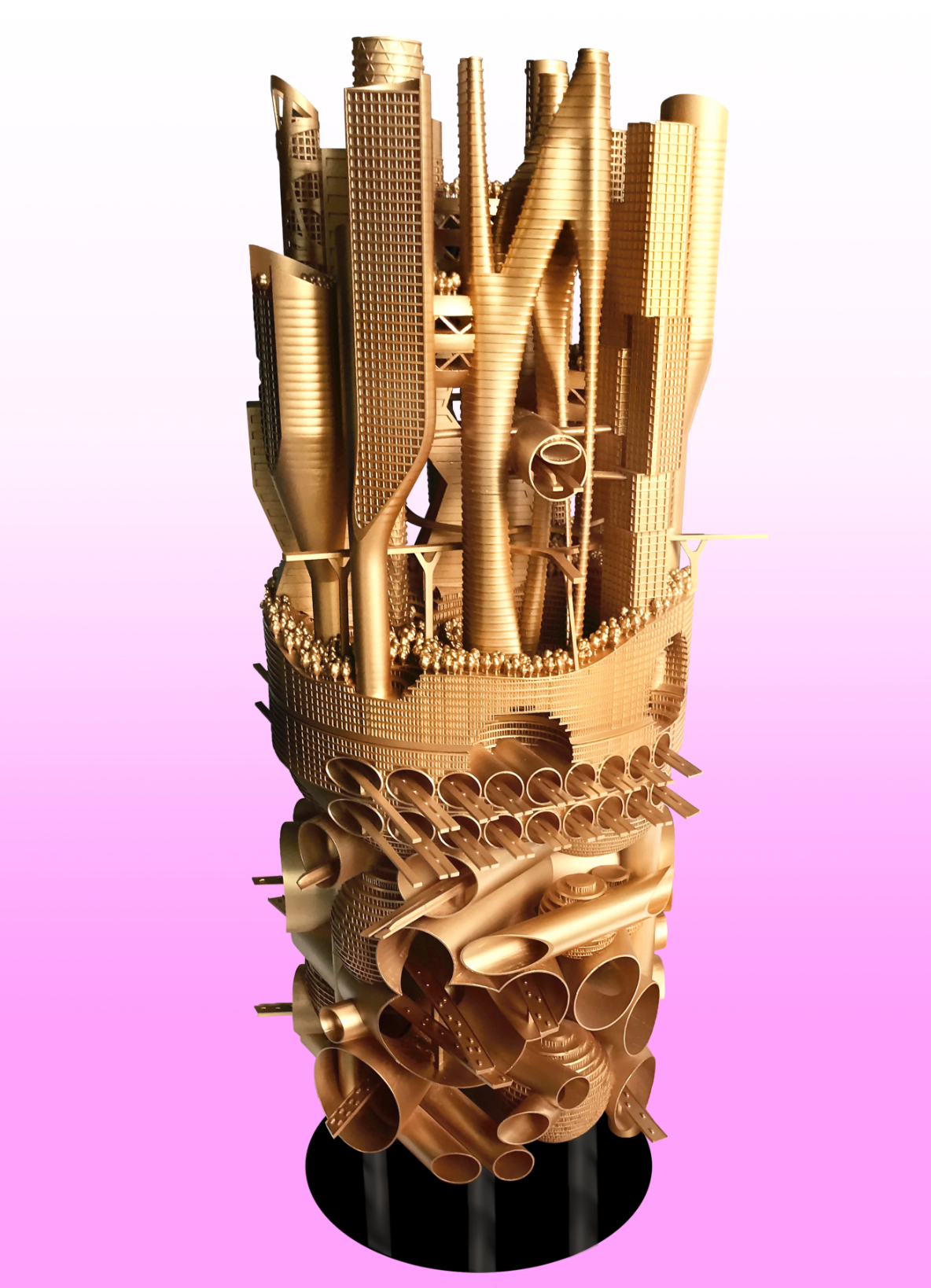The Node
The NODE (in the The FIELD )
节点//多样交通的城市
Premiered at Beijing Design Week

In the discourse on China’s megacities, dizzyingly dense centres and vast suburban fields vie for our attention. But in reality they are part of the same cityscape and produced by the same urban forces. These dialectical urban realities are drastically divergent yet have forged similarly artificial landscapes born out of the infras-pace remnants of China’s flash urbanisation.
During Beijing Design Week 2017, MARS Architects will introduce two works of critical research that examine the dialectically opposite extremes of compression and dispersion: The NODE and The FIELD. The Node is large 3D printed sculpture that reveals a detailed prognosis of hyper densification at the heart of the city. The Field is an interactive video installation. As a clinical observation of China’s existing suburban expanse it slices through the landscape, allowing endless snapshots of a near infinite suburbia.
The two provocative installations are the starting point of a discussion on how the Chinese city is forging new notions of urbanity that straddle the extremes and demand radical new strategies for its consolidation, liveability and sustainability.
THE NODE // multimodal city is a large, highly complex 3D printed model that exists in a place of architectural hyperbole, interrogating a future that will evolve around nodes of hyper density and maximum mobility.
Crossroads have always been the heart of urban life. From the footbridge to central station, urban vibrancy coalesces around the places through which we move. The NODE examines how the scale of Chinese infrastructural projects might be maintained while their footprints are reduced. Stations in the suburbs don’t immediately seem to require urban levels of density, but as Chinese urbanisation continues to unfold, hyper density will be required in order to prevent unending sprawl. The NODE takes a transit node the scale of Shanghai’s Pudong and make it fit extreme, yet healthy urban density. By folding infrastructure often built on a plane to a 3D form creating layered structures, we attempted to answer the question: what is the maximum extent to which infrastructural systems may be compressed?
A large, highly sophisticated 3D printed model, the NODE exists in a place of architectural hyperbole, interrogating a future that requires density in the extreme. As a work of critical design, we seek to test the functions and a
aesthetics of network density where human space emerges from infrastructural monuments. The NODE aims to understand the power of immense intersections, and how vibrant urban life can be built out of concrete and steel monoliths.

节点//多样交通的城市
节点//多样交通的城市模型是一个依附于夸张建筑群的高度复杂的三维模型,它质问着在高密度节点和最大迁移率下发展的未来。
十字路口一直是城市生活的中心。从天桥到中央车站,城市的活力聚集在我们走过的地方。该作品考察了中国基础设施项目的规模在减少的情况下如何生存。郊区车站似乎并不需要同城市水平一样的密度,但是随着中国城市化的持续发展,需要高密度的枢纽去抑制无休止的扩张。该作品采用了和上海浦东相似规模的交通节点,并使其适应了极端但有利的城市密度。通过从平面出发建造分层结构的三维形态从而实现了基础设施的穿插折叠,我们试图回答这样一个问题: 基础设施的最大压缩值是什么?
这个大型的、高度复杂的3D打印模型---------“节点”:依附于夸张的建筑群,质问一个需要极端密度枢纽的未来。作为一项重要设计的工作,我们试图测试网络密度的功能和美学基于此,人类空间从基础设施的遗迹中浮现出来。此作品试图去了解大型交叉路口的力量,以及从钢筋混凝土中诞生的城市生活是如何充满活力的。

THE FIELD
领域 // 无垠城市
VISUAL SECTION OF THE YANGTZE RIVER DELTA
A one hour uninterrupted urban section at 200 km/h ~ details at Neville PHD DEFENCE: https://youtu.be/XlJixhtMaSg
Continue with the THE FIELD
Owned by neville mars / Added by neville mars / 15.5 years ago / 70681 hits / 2 hours view time
Tags
Latest Entries
Contribute
Login to post an entry to this node.



